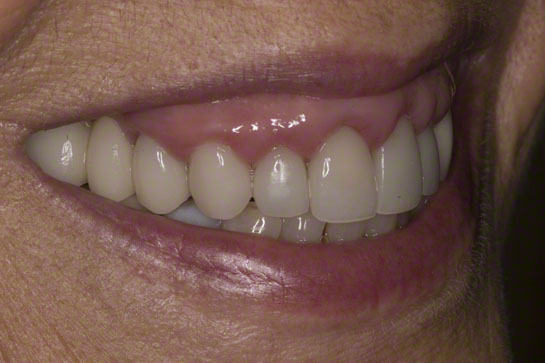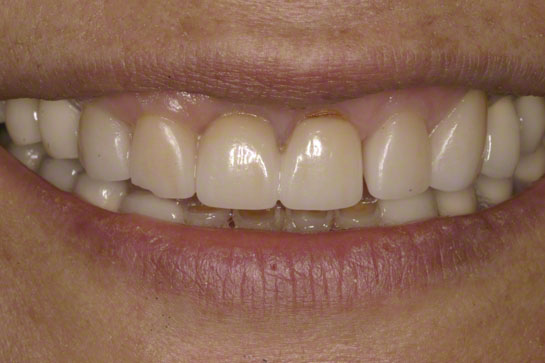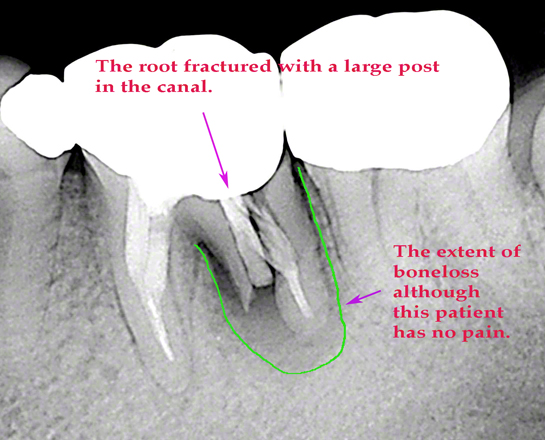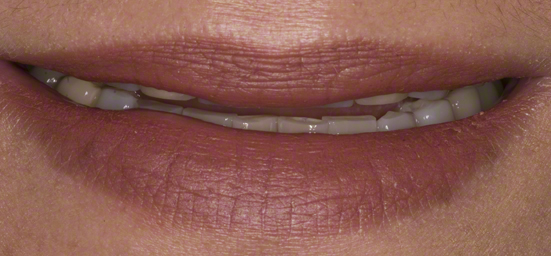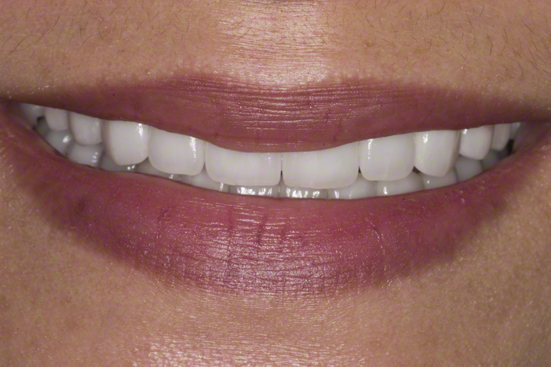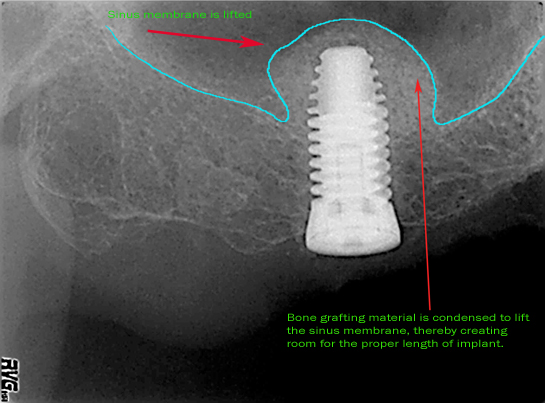Over the years I have had the opportunity to see cases of patients who came to me for initial consultation but ended up elsewhere for the completion of their dental work. Here are some cases where the patients returned to me a few years later to express their discontent and to complain about problems with their teeth. These are smiles of regret. Who do you choose to restore your teeth? Sometimes people will make their choices based on beautiful advertisements that they see. Sometimes the choice may be based on a price tag that may fit their budget at that particular moment. The key to remember is that an unsuccessful restorative case may eventually cost you more time and money to have the work redone.
CASE I: Excess cement materials left under the gum line and around every single restoration. This caused chronic inflammation of the gum and bone loss over time. The patient was also unhappy with the esthetic result.
CASE II: Restorations done without regards to the foundation of this patient's bite. After 3 years, there are gaps between teeth, crowns with open margins, crowns that are breaking away, and discomfort on chewing. There are even teeth left unrestored. The patient was also unhappy with the esthetic result.
Images of actual patients of Alex Nguyen, DDS are Copyrighted and Digitally Embedded to track Unauthorized Use
........................................................................................
Alex Nguyen, DDS is a Saratoga Dentist who practices General Dentistry, Cosmetic, and Implant Dentistry. For over 20 years the practice has been serving the residents of Santa Clara County and San Francisco Bay Area.


